|
|
|
|
|
Oil On
Canvas, Real Flavor of Old Masters
|
|

|
ARTWORKS
INDEX
A B C D E F G H I J K L M N O P Q R S T U V W X Y Z |
ARTISTS
INDEX
A B C D E F G H I J K L M N O P Q R S T U V W X Y Z |
|
|
| | |
|
|
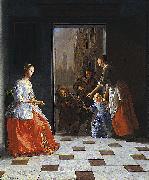 |
Jacob Ochtervelt -- Click Here
|
|
(1634, Rotterdam - 1682, Amsterdam), was a Dutch Golden Age painter.
According to the RKD he was active in Haarlem where he was a student of Nicolaes Pietersz Berchem and later he moved back to Rotterdam (1655-1672) where he was a pupil of Ludolf de Jongh. After the rampjaar he moved to Amsterdam |
|
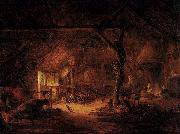 |
Isaac van Ostade -- Click Here
|
|
(bapt. June 2, 1621, Haarlem - buried October 16, 1649, Haarlem) was a Dutch genre and landscape painter.
Van Ostade began his studies under his brother, Adriaen, with whom he remained till 1641, when he started his own practice. At an early period he felt the influence of Rembrandt, and this is apparent in a Slaughtered Pig of 1639, in the gallery of Augsburg. He soon found a style more suited to his own inclinations. He produced pictures in 1641-1642 on the lines of his brother - amongst these, the Five Senses, which Adrian afterwards represented by a Man reading a Paper, a Peasant tasting Beer, a Rustic smearing his Sores with Ointment and a Countryman sniffing at a Snuff-box. A specimen of Isaac's work at this period may be seen in the Laughing Boor with a Pot of Beer, in the museum of Amsterdam; the cottage interior, with two peasants and three children near a fire, in the Berlin museum; a Concert, with people listening to singers accompanied by a piper and flute player, and a Boor stealing a Kiss from a Woman, in the Lacaze collection at the Louvre.
The interior at Berlin is lighted from a casement in the same Rembrandtesque style as Adrian's interior of 1643 at the Louvre. He received low prices for this kind of painting, in which he could only remain subordinate to his brother. Gradually he abandoned Adrian's cottage subjects for landscapes in the fashion of Esaias van de Velde and Salomon van Ruysdael. Once only, in 1645, he reverted to the earlier mode, when he produced the Slaughtered Pig, with a boy puffing out a bladder, in the museum of Lille.
Isaac's progress in his new path was greatly facilitated by his previous experience as a figure painter; and, although he now selected his subjects either from village high streets or frozen canals, he gave fresh life to the scenes by depicting animated groups of people with a refined and searching study of picturesque contrasts. He did not live long enough to bring his art to the highest perfection. He died on 16 October 1649 having painted about 400 pictures (see H de Groot, 1910).
The first manifestation of Isaac's surrender of Adrian's style is apparent in 1644 when the skating and sledging scenes were executed which we see in the Lacaze collection and the galleries of the Hermitage, Antwerp and Lille. Three of these examples bear the artists name, spelled Isack van Ostade, and the dates of 1644 and 1645. The roadside inns, with halts of travellers, form a compact series from 1646 to 1649. This is the last form of Isaac's art and has very distinct peculiarities. The air which pervades his composition is warm and sunny, yet mellow and hazy, as if the sky were veiled with a vapour coloured by moor smoke. The trees are rubbings of umber, in which the prominent foliage is tipped with touches hardened in a liquid state by amber varnish mediums. The same principle applied to details such asglazed bricks or rents in the mud lining of cottages gives an unreal and conventional stamp to them.
These quirks are overcome by his broad contrasts of light and shade and the masterly figures of horses, riders, travellers, rustics, quarrelling children, dogs, poultry and cattle. A favorite place is always given to the white horse, which seems as invariable an accompaniment as the grey in the skirmishes and fairs of Philip Wouwerman.
Isaac displays the best qualities in winter scenes. The absence of foliage, the crisp atmosphere and the calm air of cold January days, unsullied by smoke or vapour, preclude the use of the brown tinge, and leave the painter no choice but to ring the changes with a great variety of opal tints. Then the figures emerge with masterly effect on the light background. Amongst the roadside inns it is worth noting those in the collections of Buckingham Palace, the National Gallery, London, the Wallace Collection and Holford collections in England, the Louvre, Berlin, Hermitage and Rotterdam museums and the Rothschild collection at Vienna. The finest of the ice scenes is the famous one at the Louvre.
|
|
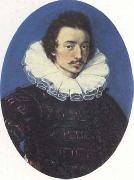 |
Isaac Oliver -- Click Here
|
|
French-born English Miniaturist, ca.1560-1617
was a French-born English portrait miniature painter. Born in Rouen, he moved to London in 1568 with his Huguenot parents Peter and Epiphany Oliver to escape the Wars of Religion in France. He then studied miniature painting under Nicholas Hilliard; and developed a naturalistic style, which was largely influenced by Italian and Flemish art. He later married Sara, daughter of the well-known portrait painter Marcus Gheeraerts the Elder (c. 1520 ?C c. 1590) and his wife Susannah de Critz in 1602 after his first wife, Elizabeth, had died in 1599 ?C the mother of his eldest child: Peter Oliver, who was also a famous "limner". Susannah was the daughter of Troilus de Critz, a goldsmith from Antwerp, and close relative of John de Critz, the Queen's Serjeant-Painter. She was also the older sister or cousin of Magdalen de Critz who married Marcus Gheeraerts the Younger (1562 ?C 1635). After the death of Elizabeth I, he became a painter of James I's court, |
|
 |
Ilya Ostroukhov -- Click Here
|
|
1858-1929. Was a Russian painter. Ostroukhov was born to a rich family. In 1885, Ostroukhov joined the Association of Travelling Art Exhibitions. Ostroukhov was primarily a landscape painter. |
|
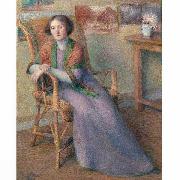 |
Hippolyte Petitjean -- Click Here
|
|
Hippolyte Petitjean (1854 - 1929)
|
|
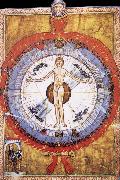 |
Hildegard of Bingen -- Click Here
|
|
1098-1179,German composer, abbess and mystic. Her writings include much lyrical and dramatic poetry which has survived with monophonic music. The Symphonia armonie celestium revelationum contains musical settings of 77 poems arranged according to the liturgical calendar. The poetry is laden with imagery and the music, based on a few formulaic melodic patterns, is in some respects highly individual. Her morality play Ordo virtutum contains 82 melodies in a more syllabic style. |
|
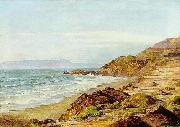 |
Henry Otto Wix -- Click Here
|
|
Henry Otto Wix (1866 - 1922), also known as Otto Wix, was a German-born landscape and portrait painter who emigrated to the United States in the late 1890s. He studied in New York, but visited Hawaii in 1907 and 1908-9. About 1910, he moved to San Francisco, but visited Hawaii again in 1912. He also made several sketching trips to Mexico. Wixes marriage ended in divorce, resulting in depression and alcoholism. He died by his own hand in Santa Barbara, California on March 13, 1922.
Wix is best known for his landscapes in watercolor. The Honolulu Academy of Arts and the Smithsonian American Art Museum are among the public collections holding paintings by Henry Otto Wix |
|
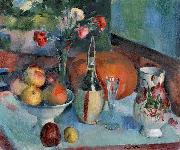 |
Henry Ottmann -- Click Here
|
|
painted Nature morte aux fruits et a la fiasque de vin in 20th century
French, 1877-1927 |
|
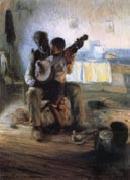 |
Henry Ossawa Tanner -- Click Here
|
|
African-American Realist Painter, 1859-1937
American painter. He was one of the foremost African American artists, achieving an international reputation in the early years of the 20th century for his religious paintings. The son of an African Methodist Episcopal bishop, he studied art with Thomas Eakins from 1880 to 1882 at the Pennsylvania Academy of the Fine Arts in Philadelphia. He then worked in Philadelphia and Atlanta, GA, where he ran a photography studio and taught at Clark College. |
|
 |
Henry nelson o neil,A.R.A. -- Click Here
|
|
1817-1880
|
|
|
|
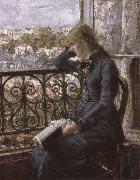 |
Hans Olaf Heyerdahl -- Click Here
|
|
Swedish, 1857-1913
Norwegian painter. He was born into an enlightened but conservative family, his father being an engineer, occasional architect and writer of Nordic saga poetry, and he spent his childhood and youth in the rapidly expanding town of Drammen, 40 km from the capital Christiania. In 1873 he was admitted to the Kongelige Tegneskole in Christiania, where he studied under Peder C. Thurmann, a landscape artist trained in Desseldorf. For more advanced training, Heyerdahl was obliged to go abroad, and in 1874 he enrolled at the Munich Akademie. He was encouraged by Professor Ludwig von Lefftz (1845-1910) to give up landscape in favour of history painting and portraits (e.g. the artists Christian Skredsvig, 1876, and Eilif Peterssen, 1877; both Oslo, N.G.). In 1877, under the guidance of Professor Wilhelm Lindenschmit (1829-95), Heyerdahl finished his most inventive and brilliant composition, the Expulsion from the Garden (Oslo, N.G.). Using over life-size figures, set in a barren tempestuous landscape, Heyerdahl skilfully contrasted the youthful rage of Adam with the resigned despair of Eve. This sombre work won him a third prize medal at the Exposition Universelle in Paris in 1878. |
|
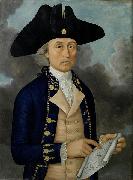 |
Guan Zuolin of Macao -- Click Here
|
|
painted Portrait of Captain Joseph Huddart in c. 1785 |
|
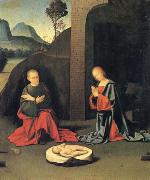 |
Giovanni Battista Ortolano -- Click Here
|
|
Ferrara ca 1487-after 1524 |
|
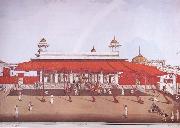 |
Ghulam Ali Khan of Delhi -- Click Here
|
|
fl.1815-1852
Delhi,Dated 18 |
|
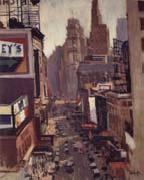 |
George Oberteuffer -- Click Here
|
|
American, 1878-1940 |
|
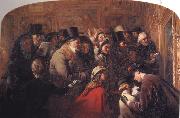 |
George Bernard O Neill -- Click Here
|
|
(1828-1917). Irish genre painter |
|
|
|
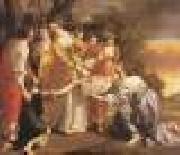 |
GENTILESCHI, Orazio -- Click Here
|
|
Italian Baroque Era Painter, ca.1563-1639
Although he was eight years older than Caravaggio, he is nevertheless regarded as a Caravaggesque artist, so deeply was his mature style affected by his knowledge of the younger painter's art. His response to Caravaggio was intensely poetic, and none of Caravaggio's many gifted followers produced more beautiful pictures. |
|
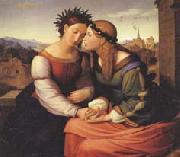 |
Friedrich overbeck -- Click Here
|
|
1789-1869
German religious painter. Expelled from the Vienna Academy because of his opposition to its classicism, he went to Rome and with Peter von Cornelius, Veit, Schadow-Godenhaus, and others, formed the group known as the Nazarenes. His first real successes were his frescoes for the Casa Bartholdy (now in Berlin) and for the Villa Massimo. Among his notable paintings are Christ's Entry into Jerusalem and Christ's Agony in the Garden. Overbeck sought to make his art serve religion. |
|
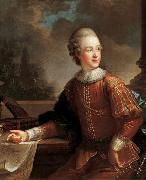 |
Friedrich olenhainz -- Click Here
|
|
(June 28, 1745 - November 5, 1804) was a German painter. |
|
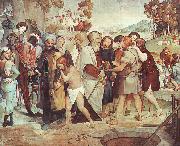 |
Friedrich Johann Overbeck -- Click Here
|
|
1789-1869
German
German religious painter. Expelled from the Vienna Academy because of his opposition to its classicism, he went to Rome and with Peter von Cornelius, Veit, Schadow-Godenhaus, and others, formed the group known as the Nazarenes. His first real successes were his frescoes for the Casa Bartholdy (now in Berlin) and for the Villa Massimo. Among his notable paintings are Christ Entry into Jerusalem and Christ Agony in the Garden. Overbeck sought to make his art serve religion. His influence was due more to the purity of his doctrine than to the power of his work, which is often lacking in pictorial appeal and in color. |
|
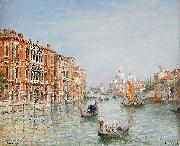 |
Frans Wilhelm Odelmark -- Click Here
|
|
painted Canale Grande - Venice in 1849-1937 |
|
|
|
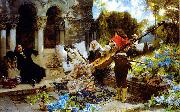 |
Francisco Pradilla Ortiz -- Click Here
|
|
(July 24, 1848 - November 1, 1921) was a prolific Spanish painter famous for creating historical scenes.
He was born in Villanueva de Gellego, near Zaragoza in Aragon, and studied initially in Zaragoza and then transferred to the Real Academia de Bellas Artes de San Fernando and the Academia de Acuarelistas in Madrid. In 1873, he won a scholarship to go to Rome. From there he had opportunities to travel to France and Venice and studied the old masters. In 1878 he submitted his painting Doña Joanna of Castile or (Juana la Loca) to the National Exhibition in Spain and was awarded the Medal of Honor. The Spanish Senate then commissioned him to create La Rendicien de Granada (The Surrender of Granada) that took him three years to complete (1882). In 1881 he became the Director of the Spanish Arts Academy in Rome, but resigned from this post after two years. He traveled, mostly in Italy, portraying local themes and people. In 1897 he returned to Madrid as the director of the Museo del Prado. He held this position only briefly and then focused again on painting.
His total output is well over 1,000 paintings showing his interest in a variety of subjects and styles, often without regard of the current fashion. He is primarily recognized for his historical paintings, the last one completed in 1910 carries one of the longer titles of a major painting, Cortejo del bautizo del Prencipe Don Juan, hijo de los Reyes Catelicos, por las calles de Sevilla (Retinue of the Baptism of Don Juan, son of the Catholic Monarchs, Along the Streets of Seville). Much more common, however, are costumbristaseoften romanticized studies that show local customs or mannerseand landscapes that are often sketchy, with impressionistic influences. Financial duress after the bankruptcy of his bank may have imposed a special need to be productive.
He died in Madrid in 1921 at the age of 73.
|
|
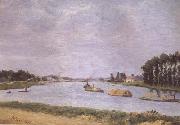 |
Francisco Oller y Cestero -- Click Here
|
|
San Juan,Puerto Rico 1833-Santurce 1917
Puerto Rican painter. He studied from 1851 to 1853 at the Real Academia de Bellas Artes de San Fernando in Madrid under Federico de Madrazo y Kentz and in Paris from 1858 to 1863 under Thomas Couture and Charles Gleyre at the Ecole Imperiale et Speciale de Dessin and at the Academie Suisse. There he met Camille Pissarro, Paul Cezanne and Armand Guillaumin, who together with Couture and the work of Courbet influenced his work towards Realism and Impressionism. |
|
 |
Francis Oliver Finch -- Click Here
|
|
British watercolour painter, 1802-1862 |
|
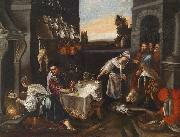 |
Follower of Jacopo da Ponte -- Click Here
|
|
painted Christ in the house of Martha and Mary in 16th/17th century
|
|
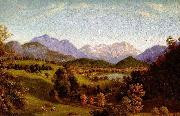 |
Ferdinand von Olivier -- Click Here
|
|
painted Loisachtal in 1842-1845
|
|
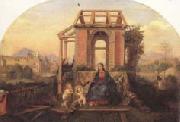 |
Ferdinand Olivier -- Click Here
|
|
German Painter, 1785-1841
Painter, draughtsman and lithographer, brother of Heinrich Olivier. The brothers' mother was a court opera singer in Dessau, and Ferdinand's later interest in the German medieval and Nazarene styles owed much to the intellectual climate at the Anhalt-Dessau court, where Leopold III Frederick Francis, Prince of Anhalt-Dessau, had been the first German prince to introduce the Gothic Revival style. Olivier took up drawing in 1801-2 under the tuition of Carl Wilhelm Kolbe and the engraver Johann Christian Haldenwang (1777-1831). In 1802-3 he accompanied his father to Berlin, where he studied woodcut techniques under Johann Friedrich Gottlieb Unger (1755-1804) and may have attended August Wilhelm Schlegel's lectures on belles-lettres and art. It was here, at the latest, that he discovered Herzensergiessungen eines kunstliebenden Klosterbruders (Berlin, 1797) by Wilhelm Heinrich Wackenroder and Ludwig Tieck, and the latter's Franz Sternbalds Wanderungen (Berlin, 1798), two books of vital significance for the painting of the Romantic era. Having decided to make art their career, Ferdinand and his brother Heinrich spent two years (1804-6) in Dresden, where they copied the works of Ruisdael and Claude Lorrain in the art gallery during the summer months. Ferdinand also took lessons from Jacob Wilhelm Mechau (1745-1808) and Carl Ludwig Kaaz, both painters of idealized landscapes, and he was probably introduced to the work of Philipp Otto Runge and Caspar David Friedrich by Friedrich August von Klinkowström (1778-1835), a friend of Runge. In June 1807 Ferdinand's excellent knowledge of French led to his appointment as embassy secretary in Paris, where Heinrich soon joined him. However, after just a few weeks he gave up his diplomatic career in order to devote himself to a study of the Musee Napoleon, which at that time housed art treasures pillaged from all parts of Europe. Ferdinand and Heinrich jointly produced three paintings for Leopold III Frederick Francis of Anhalt-Dessau: a portrait of Napoleon on Horseback (c.1809; W?rlitz, Schloss), and a Last Supper and Baptism (1809-10; Werlitz, Evangel. Ch.) for the Gothic Revival church in Werlitz. Although these last two were supposed to be copies after the 'old German school', the Olivier brothers in fact used 15th- and 16th-century Dutch and Flemish models to create original compositions. At the end of 1809 they returned to Dessau. |
|
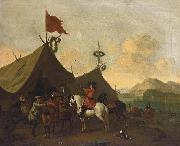 |
Evert Oudendijck -- Click Here
|
|
(1650, Haarlem - 1695, Haarlem), was a Dutch Golden Age painter.
According to Houbraken he painted stag hunts and other hunting scenes in landscapes, along with the artist "Drossaart". He was the father of Adriaen Oudendijck.
According to the RKD he was registered in the Haarlem Guild of St. Luke in 1663 as the pupil of Adriaen van Ostade which would make him about 15 years old at that time.His registration as a member of the guild in 1646 is therefore impossible.
Though Evert Oudendijk is listed in the Haarlem guild register as a member in 1646, he probably became a member in 1664 (a year suspiciously lacking member registrations), like other members mistakenly registered in 1646, such as Evert Collier and Egbert van Heemskerck. He is listed two other times in the Haarlem guild; in 1663 (listed as Ostade's pupil "Evert Adriaanszen van Oudendijck") and as painter in 1670.
|
|
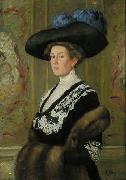 |
Ernst Oppler -- Click Here
|
|
1867, Hannover - 1929, Berlin, a Jewish German painter and etcher; elder brother of Alexander. |
|
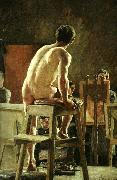 |
emil osterman -- Click Here
|
|
male model and pupils. ca. 1892
royal academy of fine arts |
|
 |
Emil Orlik -- Click Here
|
|
(July 21, 1870 - September 28, 1932) was born in Prague, which was at that time part of the Austro-Hungarian Empire, and lived and worked in Prague, Austria and Germany. He was a painter, an etcher and lithographer.
In 1905 Emil Orlik moved to Berlin and took a post at the "School for Graphic and Book Art" of the Museum of Decorative Arts (Kunstgewerbemuseum), now part of the Berlin State Museums.
|
|
 |
David Octavius Hill -- Click Here
|
|
Scottish Painter and Photographer,
1802-1870
was a founding member of the Royal Scottish Academy and its secretary for 40 years. In 1843 he enlisted the help of Robert Adamson (b. 1821, Berunside, Scot. January 1848, St. Andrews), a chemist experienced in photography, in photographing the delegates to the founding convention of the Free Church of Scotland. They used the calotype process, by which an image was developed from a paper negative. In these and other portraits they demonstrated a masterly sense of form and composition and a dramatic use of light and shade. Their five-year partnership resulted in some 3,000 photographs, including many views of Edinburgh and small fishing villages. |
|
|
|
|
|
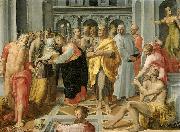 |
Circle of Pellegrino Tibaldi -- Click Here
|
|
painted The Meeting of Mary and Elizabeth in the Presence of St. Jerome, St. Joseph and Others in 1550 - 1600
|
|
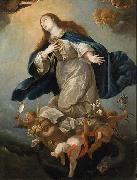 |
Circle of Mateo Cerezo the Younger -- Click Here
|
|
painted Immaculate Virgin, formerly in the Chapel of Palacio de Penaranda, Spain in 17th century
|
|
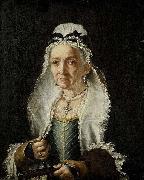 |
Circle of Fra Galgario -- Click Here
|
|
painted Portrait of an Old Lady in 1720 - 1750
|
|
|
|
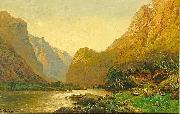 |
Carl jun. Oesterley -- Click Here
|
|
(January 23, 1839 - December 16, 1930) was a German landscape painter who was a native of Göttingen. He was the son of painter Carl Friedrich Wilhelm Oesterley (1805-1891).
He attended classes at the Polytechnikum in Hannover and, beginning 1857, at the Kunstakademie (Art Academy) in Dusseldorf where he studied religious painting under Ernst Deger. During a visit to Lebeck in 1865, where he copied Hans Memling's Passion, he made some attempts at architectural and landscape painting. These turned out so well that from then on he dedicated himself to landscape painting. Beginning in 1870 he focused his artistic efforts mainly on Norwegian landscapes, for which he devoted several study trips. He lived in Hamburg and received a first-class medal from the Menchener Ausstellung.
|
|
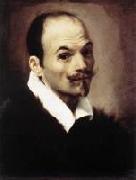 |
BORGIANNI, Orazio -- Click Here
|
|
Italian Baroque Era Painter, 1578-1616
Orazio Borgianni (c. 1575 - buried 15 January 1616) was an Italian painter and etcher of the Mannerist and early-baroque periods. He was the stepbrother of the sculptor and architect Giulio Lasso.
Borgianni was born in Rome, where he was documented in February 1604. He was instructed in the art of painting by his brother, Giulio Borgiani, called Scalzo. The patronage by Philip II of Spain induced him to visit that Spain, where he signed an inventory in January 1605. He returned to Rome from Spain after April 1605 at the height of his career, and most of the work of his maturity was carried out 1605-16. In Spain, he signed a petition to begin an Italianate academy of painting and executed a series of nine paintings for the Convento de Portacoeli, Valladolid, where they remain. From his time in Spain, there remain two of his paintings in the Prado Museum: St Christopher and the Stigmatization of St Francis.
On his return to Rome he was patronized by the Spanish ambassador, for whom he painted several pictures, and he was also employed in painting for the churches. He painted as late as 1630. after which he returned to Spain. He frescoed in the apse of the church of San Silvestro in Capite in Rome, a Martyrdom of S.Stefano I and a Messengers of Constantine call on Saint Silvestro (1610). His canvas of San Carlo Borromeo in the church of San Carlo alle Quattro Fontane (1612) is an eclectic and emotive synthesis of both Carracci and tenebrist styles. The influence of Caravaggio is also evident in a painting of the same saint (1616) now in the Hermitage Museum. A lively self-portrait of an earnest, somewhat foppish Borgianni is in the Rome Galleria Nazionale d'Arte Antica. |
|
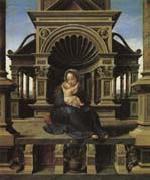 |
Bernard van orley -- Click Here
|
|
Flemish Northern Renaissance Painter , c.1488-1551
|
|
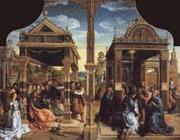 |
Bernaert Van Orley -- Click Here
|
|
Flemish Northern Renaissance Painter, ca.1488-1541, Painter and tapestry designer, son of Valentin van Orley. He was one of the greatest proponents of ROMANISM, a northern style based on the ideals of the Italian Renaissance. It must have been in Brussels, however, that he saw the Italian works of art that influenced him so profoundly, for it seems unlikely that he ever travelled to Italy. Brussels was then world-renowned as the centre for tapestry manufacture but was suffering from the ecliptic rise of Antwerp as the pre-eminent painting centre. The artist made the best of both situations, establishing himself as a leading designer for the Brussels tapestry industry and as a master in the Antwerp Guild of St Luke by 1517. |
|
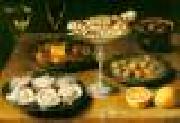 |
BEERT, Osias -- Click Here
|
|
Flemish Baroque Era Painter, ca.1580-1624
Flemish painter. In 1596 he went to study with Andries van Baseroo and in 1602 became a master in the Antwerp Guild of St Luke; these two dates suggest his probable date of birth. Beert married Marguerite Ykens on 8 January 1606. Contemporary documents describe him as a cork merchant. The esteem enjoyed by Beert is indicated by the large number of pupils he had, including, in 1610, Frans van der Borch; in 1615, Frans Ykens; in 1616, Paulus Pontius; and, in 1618, Jan Willemssen. Beert's son, Osias Beert the younger (1622-78), was also a painter and became a master in 1645. |
|
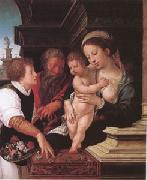 |
Barend van Orley -- Click Here
|
|
Brussels ca 1488-1541 |
|
 |
augustus osborne lamplough,r.w.s -- Click Here
|
|
1877-1930
|
|
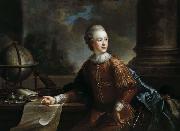 |
August Friedrich Oelenhainz -- Click Here
|
|
(June 28, 1745 - November 5, 1804) was a German painter.
|
|
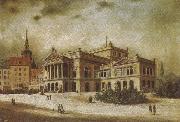 |
arthur o shaughnessy -- Click Here
|
|
1844 C 81, English poet and naturalist. He was a member of the zoological department of the British Museum. He wrote four volumes of poetrye Epic of Women (1870), Lays of France (1872), Music and Moonlight (1874), and Songs of a Worker (1881)??which all reveal the influence of D. G. Rossetti. One ode, beginning, We are the music-makers, is his best-known poem. |
|
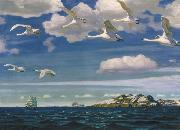 |
Arkady Alexandrovich Rylov -- Click Here
|
|
Arkady Alexandrovich Rylov (Russian, 29 January [O.S. 17 January] 1870 - June 22, 1939) was a Russian and Soviet Symbolist painter.
Biography
Rylov was born in the village Istobenskoye, Vyatka gubernia. He was brought in the family of his stepfather, a notary (Rylov's father had a psychiatric illness). He moved to Saint Petersburg and studied at the Technical Design School of Baron Schtiglitz (1888-1891), then at the Imperial Academy of Arts under Arkhip Kuindzhi (1894-1897).
In the Blue Expanse, 1918Rylov was a member of the Mir iskusstva movement and its spin-off Union of Russian Artists also a member of the Association of Artists of the Revolutionary Russia. He was a chairman of the Kuindzhi Society. |
|
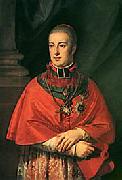 |
Archduke Rudolf of Austria -- Click Here
|
|
Rudolf Johannes Joseph Rainier von Habsburg-Lothringen, Archduke and Prince Imperial of Austria, Prince Royal of Hungary and Bohemia (8 January 1788 - 24 July 1831) was a Cardinal, an Archbishop of Olomouc, and a member of the House of Habsburg-Lorraine.
Born in Pisa, Italy, he was the youngest son of Emperor Leopold II and Maria Louisa of Spain. He was elected archbishop of Olomouc in 1819 and became cardinal in the year 1820.
In 1803 or 1804, Rudolf began taking lessons in piano and composition from Ludwig van Beethoven. The two became friends, and Rudolph became a supporter and patron of Beethoven; their meetings continued until 1824. Beethoven dedicated 14 compositions to Rudolph, including the Archduke Trio, the Hammerklavier Sonata, the Emperor Concerto and the Missa Solemnis. Rudolph, in turn, dedicated one of his own compositions to Beethoven. The letters Beethoven wrote to Rudolph are today kept at the Gesellschaft der Musikfreunde in Vienna.
On 24 March 1819 he was appointed, at the age of 31, Archbishop of Olomouc in the present day Czech Republic but then part of the Austrian Empire. He was made Cardinal-Priest of the titular church of S. Pietro in Montorio by Pope Pius VII on 4 June 1819. He was ordained a priest on 29 August 1819, and consecrated a bishop on 26 September.
In 1823 - 24, he was one of the 50 composers who composed a variation on a waltz by Anton Diabelli for Vaterländischer Kenstlerverein. In Rudolf's case, the music was published anonymously, as by "S.R.D" (standing for Serenissimus Rudolfus Dux).
|
|
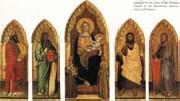 |
Andrea di Orcagna -- Click Here
|
|
Italian Byzantine Style Painter, ca.1320-1368 |
|
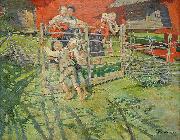 |
Allan osterlind -- Click Here
|
|
painted Lekande barn - sommar pa fabodvallen in 1890 |
|
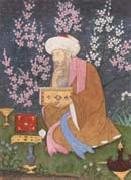 |
Ali of Golconda -- Click Here
|
|
the period of 1465-1535
|
|
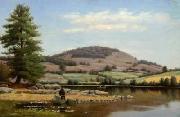 |
Alfred Ordway -- Click Here
|
|
(1821 - 1897) was an American landscape and portrait painter, and one of the founding fathers of the Boston Art Club.
Alfred was born in Roxbury, Massachusetts to mother Currier, and father Thomas Ordway on March 9, 1821. With his father being the cities' clerk, Alfred spent the majority of his childhood in Lowell, Massachusetts. His family can be traced back to the early 17th century when James Ordway settled in Dover, New Hampshire. Both his parents fought in the Revolutionary War, and his grandfather, Nehemiah Ordway, a physician in Amesbury, Massachusetts, was put in charge "to form and equip a company for Bunker Hill". |
|
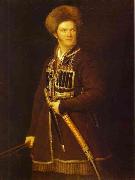 |
Aleksander Orlowski -- Click Here
|
|
(March 9, 1777 - March 13, 1832) was a Polish painter and sketch maker, pioneer of lithography in the Russian Empire.
Orłowski was born in 1777 in Warsaw to a tavern-keeper. In his early childhood he became known as a prodigy and soon Izabela Czartoryska financed his first classes of painting with the notable artist Jan Piotr Norblin. In 1793 Orłowski joined the Polish Army and fought in the Kościuszko Uprising against Imperial Russia and Prussia, but was wounded and returned to Warsaw for further studies, financed by Prince Jezef Poniatowski. He studied with many notable painters of the epoch, among them Norblin, Marcello Bacciarelli and Wincenty Lesserowicz. In 1802, after the Partitions of Poland, he moved to Russia, where he became one of the pioneers of lithography.
Among his works are countless sketches of everyday life in Poland and Russia, as well as scenes of the Kościuszko Uprising and other Polish wars.
|
|
 |
Aleksander Orlowski -- Click Here
|
|
Aleksander Orłowski
Aleksander Orłowski (March 9, 1777 - March 13, 1832) was a Polish painter and sketch maker, pioneer of lithography in the Russian Empire.
Orłowski was born in 1777 in Warsaw to a tavern-keeper. In his early childhood he became known as a prodigy and soon Izabela Czartoryska financed his first classes of painting with the notable artist Jan Piotr Norblin. In 1793 Orłowski joined the Polish Army and fought in the Kościuszko Uprising against Imperial Russia and Prussia, but was wounded and returned to Warsaw for further studies, financed by Prince Jezef Poniatowski. He studied with many notable painters of the epoch, among them Norblin, Marcello Bacciarelli and Wincenty Lesserowicz. In 1802, after the Partitions of Poland, he moved to Russia, where he became one of the pioneers of lithography.
Among his works are countless sketches of everyday life in Poland and Russia, as well as scenes of the Kościuszko Uprising and other Polish wars.
|
|
 |
Albertus Del Orient Browere -- Click Here
|
|
American, 1814-1887 |
|
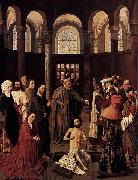 |
Albert van Ouwater -- Click Here
|
|
Albert van Ouwater (c. 1410/1415-1475) was one of the earliest artists of Early Netherlandish painting working in the Northern Netherlands, as opposed to Flanders in the South of the region.
[edit] BiographyHe was probably born in Oudewater, and is mentioned by Karel van Mander (1604) as a reputable painter at the time in which he lived.[1] According to Karel van Mander he was possibly a contemporary of Jan van Eyck and had been the teacher of Geertgen tot Sint Jans, though he was quick to qualify this statement with the eye-witness account of an old man named Albert Simonsz who had been a pupil of Jan Mostaert and claimed neither he nor Mostaert had ever even heard of this Albert van Ouwater or Geertgen tot Sint Jans.[1] Van Mander highly commends an altarpiece by Van Ouwater in the principal church in Haarlem, the Grotekerk or Sint-Bavokerk, representing St. Peter and St. Paul, in which the figures are carefully and correctly designed, and richly coloured.[1] Van Mander posits Van Ouwater as the founder of the Haarlem school of painting, making him the first major Dutch (as opposed to Flemish) artist. According to Van Mander, landscape painting was a particular specialty of this Dutch school, although none of Van Ouwater's surviving works exhibit this tendency. Van Ouwater seems to have been a contemporary of Dirk Bouts in mid-15th-century Haarlem, and Geertgen tot Sint Jans may have been his pupil. |
|
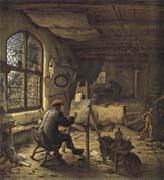 |
Adriaen van ostade -- Click Here
|
|
Dutch Baroque Era Painter, 1610-1685
Painter, draughtsman and etcher. According to Houbraken's rather unreliable biography, he was a pupil concurrently with Adriaen Brouwer of Frans Hals in Haarlem. Hals influenced him very little, whereas Brouwer, who was described as 'known far and wide' as early as 1627, had a decisive influence on the evolution of Adriaen van Ostade's always idiosyncratic portrayal of peasant life. The first documentary mention of Adriaen van Ostade as a painter is in 1632 (Schnackenburg, 1970). Most of his paintings are signed and dated, the earliest firmly dated example being the Peasants Playing Cards |
|
|
|
|
| | |
|
|
|
|